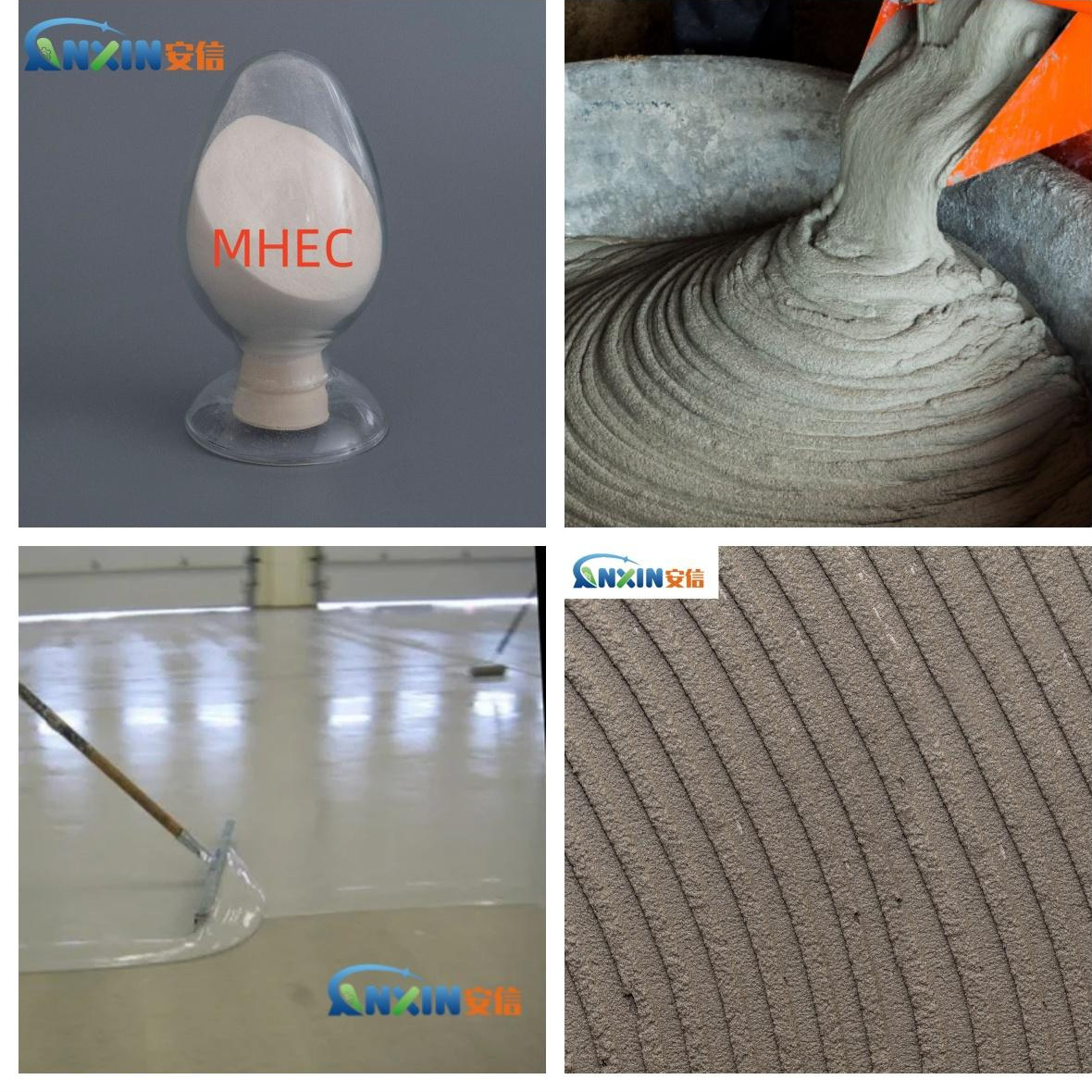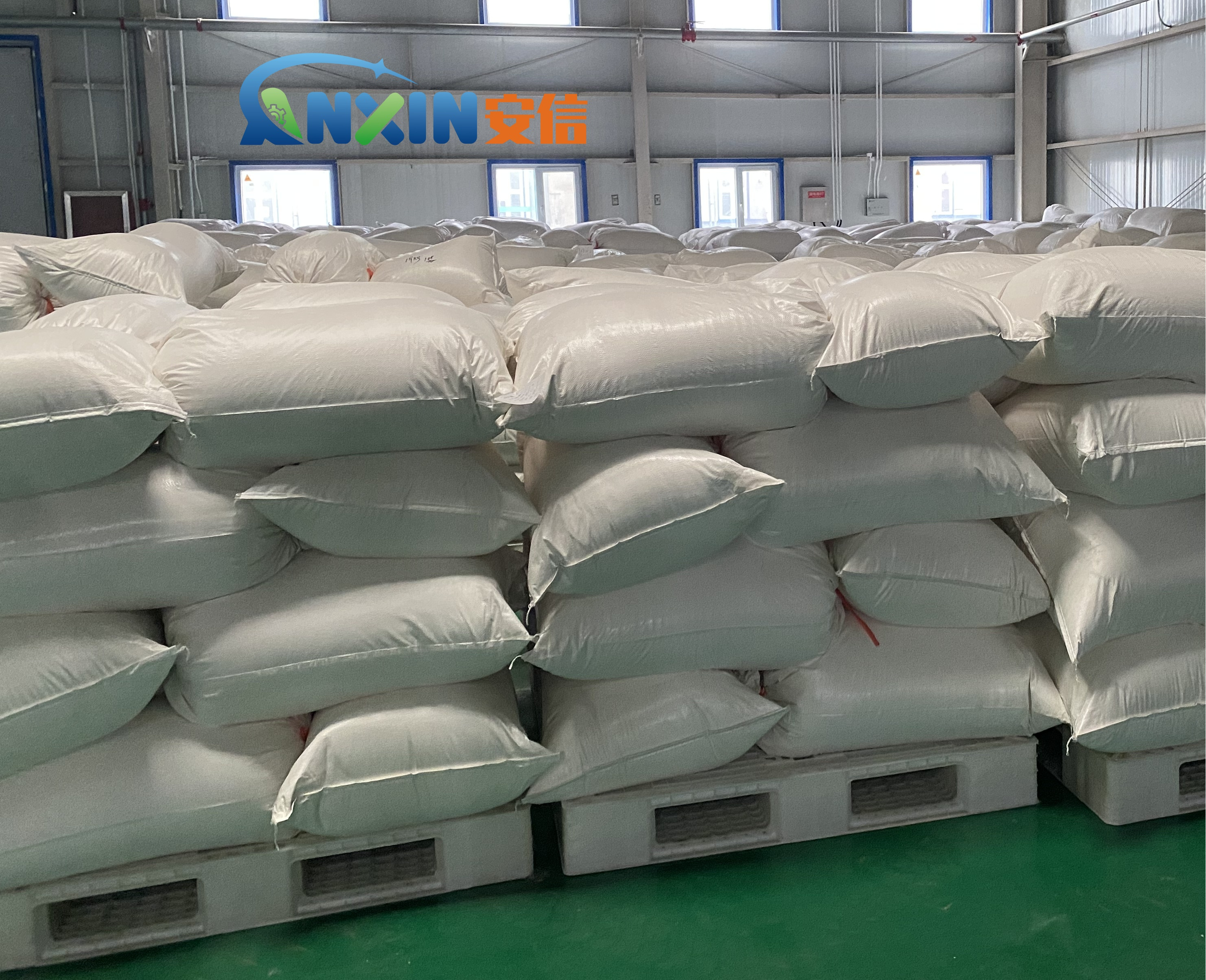Methyl hydroxyethyl cellulose (MHEC) is a non-ionic cellulose ether widely used in building mortar systems. Due to its excellent thickening, water retention, workability and compatibility, MHEC has become one of the indispensable additives in dry-mixed mortar, especially in tile adhesive, plaster mortar, floor mortar, self-leveling mortar and other products.
1. Mechanism of action of MHEC in mortar
MHEC, as a water-soluble polymer material, can form a uniform viscous aqueous solution or colloid in mortar. When it is added to dry-mixed mortar and comes into contact with water, MHEC quickly hydrates and dissolves, thereby affecting the rheological properties of the mortar, cement hydration process, water retention and interface properties. Its main mechanism of action includes the following points:
Thickening effect: MHEC forms a high viscosity solution after dissolving in water, which can significantly increase the viscosity of the mortar system, thereby improving the construction feel and anti-sagging properties;
Water retention effect: MHEC has excellent water retention capacity, which can reduce the loss of mixing water, ensure the full hydration of cement, gypsum and other cementitious materials, and improve strength development;
Lubrication and construction performance improvement: Cellulose ether molecules provide a certain lubricity in the mortar system, which is conducive to the application and spreading of mortar and improves construction efficiency;
Bubble stabilization effect: MHEC can stabilize some bubbles during the mixing process, and an appropriate amount of microbubbles can improve the workability and water retention of the mortar;
Delayed coagulation: MHEC has a certain delay effect on cement hydration, which helps to extend the operability time.
2. Specific improvement of mortar performance by MHEC
2.1. Improved construction performance
Mortar construction performance is a key indicator to measure its ease of use. MHEC improves the adhesion and lubricity of wet mortar, making it easier to construct. Especially in tile adhesive and plaster mortar, it can significantly reduce sagging and improve the uniformity of application.
2.2. Enhanced water retention performance
Water retention is one of the core properties of MHEC. In porous substrates (such as bricks and concrete) or high-temperature dry environments, water is easily absorbed or evaporated quickly, affecting the cement hydration reaction. MHEC effectively locks in moisture by forming a water film, reducing water seepage and shrinkage, and improving mortar strength and adhesion.
2.3. Improved bonding strength
MHEC improves the uniformity and hydration conditions of mortar, forming a more stable interface structure between mortar and substrate and surface materials (such as tiles), which helps to improve bonding strength. Especially in high-performance tile adhesives, MHEC can work synergistically with polymer emulsions (such as redispersible latex powder).
2.4. Improve anti-sagging performance
During facade construction, mortar is prone to sag due to gravity, affecting thickness control and aesthetics. MHEC provides excellent anti-sagging performance, allowing the mortar to maintain its shape on the wall, which is especially important for large-size tiles and thick layers.
2.5. Improve storage stability and dry powder fluidity
High-quality MHEC has good dry powder dispersibility and mixing uniformity, is not easy to agglomerate, and is conducive to the stable formulation and long-term storage of mortar products.

3. Application characteristics of MHEC in different mortar systems
Tile Adhesive
MHEC improves construction performance, anti-slip performance and open time, and enhances adhesion to tiles.
Plaster Mortar
Improve the smoothness of scraping, improve water retention, and prevent powdering and cracking.
Floor Mortar
Improve fluidity and self-leveling performance to ensure uniform laying thickness.
Self-leveling Mortar
Control fluidity, prevent segregation, and ensure surface flatness.
Thermal Insulating Mortar
In lightweight thermal insulation systems, MHEC ensures uniform distribution of the slurry, improves bonding and water retention.
4. Precautions for use
Additional amount control: The addition amount of MHEC is usually 0.2%~0.5%, which needs to be adjusted according to the formula and construction requirements;
Dispersion requirements: In order to give full play to its performance, MHEC is required to be evenly dispersed during the mixing process;
Compatibility with other additives: Attention should be paid to the synergistic coordination of MHEC with latex powder, retarder, defoamer and other additives to avoid mutual influence.
Methyl hydroxyethyl cellulose, as a cellulose ether with superior performance, shows excellent functional value in the mortar system. It not only improves the construction performance, physical stability and final strength of the mortar, but also plays an important role in promoting the industrialization and greening of dry-mixed mortar products. As building materials develop towards high performance and environmental protection, the application of MHEC will become more extensive and in-depth.
Post time: Jun-26-2025

